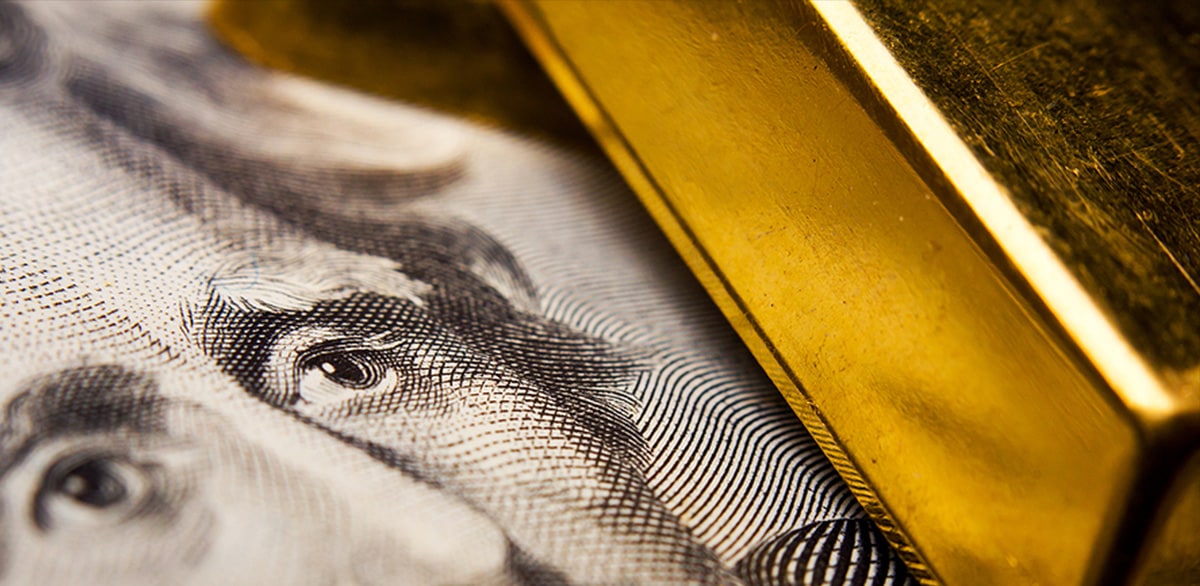
As speculation continues to grow around the strength of the U.S. dollar as a global reserve currency, the BRICS nations (Brazil, Russia, India, China, and South Africa) have initiated the development of a brand new gold-backed trading currency. In early July, the Russian Embassy in Kenya released plans[1] to announce this new BRICS currency at the BRICS summit in August 2023, which has the potential to disrupt the U.S. dollar’s hegemony, an act that comes with uncertain consequences.
It is clear that Russia is prepared to respond to the SWIFT sanctions of 2022 in a serious manner, joining other countries such as Saudi Arabia and Argentina in efforts to distance themselves from the weighty U.S. dollar. This mass wave of economic independence puts a glaring spotlight on the sustainability of the dollar’s reign. Even with skepticism about the feasibility and practical implementation of such a currency and its impact on the existing global financial system, this likely won’t be the first or last attempt at decoupling the dollar on the world stage.
BRICS nations and their individual currency developments
The BRICS nations have not been quiet about their desire to explore new trading currencies within their regions. In May 2023, Brazilian President Luiz Inácio Lula da Silva publicly explored the idea of a common South American currency, which would be used by Argentina, Brazil, Paraguay, and Uruguay. Efforts to defend the South American economy, create unity between these nations, and find independence from the dollar are the key motivating factors behind this proposal, a sentiment that has been loudly echoed by other BRICS nations such as China and Russia.
👉Related: De-Dollarization 101: What to Know About the Global Shift Away From the Dollar
Russia has been steadily cutting ties with the U.S. dollar, initiating this independence in 2014 following the annexation of Crimea and escalating efforts shortly after invading Ukraine. As a means of thwarting any U.S. control of Russia’s economy and a way to repair economic damage sustained by SWIFT sanctions, Russia has become increasingly dependent on the Chinese yuan. Russia’s yuan reserves have nearly reached parity with its U.S. dollar reserves since 2021. By March 2023, Russia had purchased 41.9 billion rubles ($538 million) worth of yuan, with the ruble-yuan trade making up 39% of the total share volume on Russia’s foreign exchange markets.
Though China and Russia have not always seen eye to eye, mutual opposition to Western influence has encouraged increased trading between the two countries throughout the decade. Because of Russia’s newfound dependency, China has used this opportunity to campaign for the yuan’s position as a global reserve currency. The nation has also attempted to further advance the yuan by creating the digital yuan, which would replace some cash in circulation.
What this means for gold and the U.S. dollar

With recent inflation hikes in the U.S. and resolutions to the debt-ceiling crisis appearing murky to these other countries, confidence in the U.S. dollar has waned, forcing the BRICS nations and other countries to reconsider their future use and current dependency on the dollar. Because of this, gold has increasingly gained popularity, with BRICS nations and countries such as Iraq and Saudia Arabia beefing up their gold reserves as a means of protecting themselves against dollar volatility and U.S. economic instability.
Countries are buying gold and silver [because] they’re worried about their currencies losing value…they’re worried about inflation.–Precious Metals Advisor Todd Graf
As studies show that 24% of central banks have active plans to increase their gold reserves over the next year, it comes as no surprise that a gold-backed BRICS currency is in development. Gold performs well during times of economic uncertainty, and in comparison to the performance of fiat currency like the U.S. dollar, a currency backed by a tangible resource could be a stable option for countries attempting to part ways with dollar-denominated trading.
👉Related: The Rise of Digital Currency, and What it Means for Gold and the US Dollar
Even with the introduction of a new gold-backed currency, experts say that the dollar won’t exactly experience immediate devaluation any time soon. There is no global consensus for an alternative currency, and there likely will not be another viable reserve option for quite a while. Though the yuan has generated a bit of noise, its position as a potential global reserve currency is slight, as it accounted for only 2% of total foreign exchange reserves in Q4 of 2022. As for the incoming BRICS currency, a real impact on the dollar may not be apparent for at least another decade. But we will likely notice the value of gold reaching new heights as more countries increase their reserves throughout the year and explore new currencies tied to the precious metal.
To learn more about the benefits of owning precious metals, request a FREE COPY of our Precious Metals Investment Guide for additional details!


